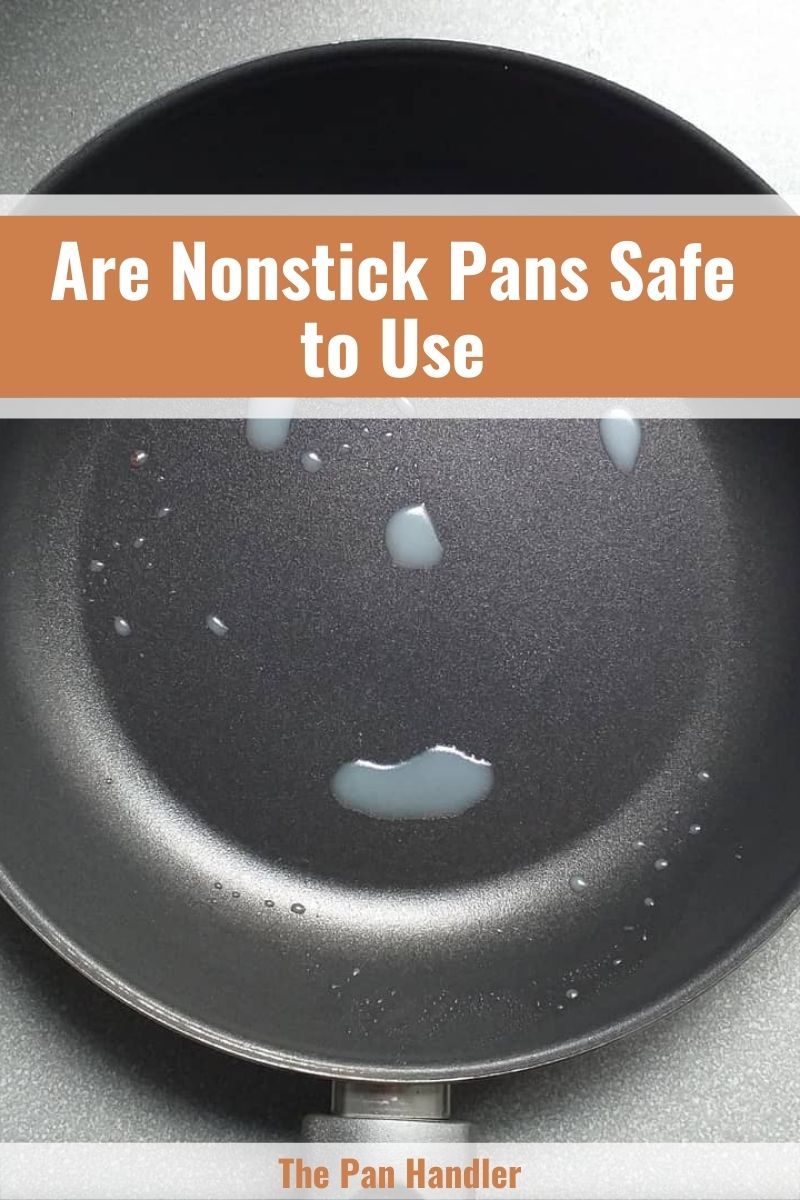Among cooking’s most important aspects is using the proper kitchenware. One of these, the non-stick pan, is a popular and in-demand kitchen item today. They are efficient at helping prevent cleaning difficulties but have a controversial history. This makes you ask: are nonstick pans safe?
Non-stick pans in a nutshell
For those of you who may be new to the cooking scene, non-stick pans are exactly what their name suggests. They are pans specially designed to prevent food from sticking to them in the process of cooking.
These pans are perfect for cooking food that may stick behind and leave bits and pieces. Think of all the times you’ve tediously scraped away burnt meat and grease from your ordinary cooking pan. With a non-stick pan, you’d have no problem with that.
Non-stick pans achieve this efficiency through their product design. They’re either coated with a special waxy substance that prevents ingredients from sticking without the use of oil, or they are naturally non-stick based on their material.
However, pans that use this helpful coating have a lot of issues regarding their safety. Take a look at its history and how it has evolved.
The sticky history of non-stick pans
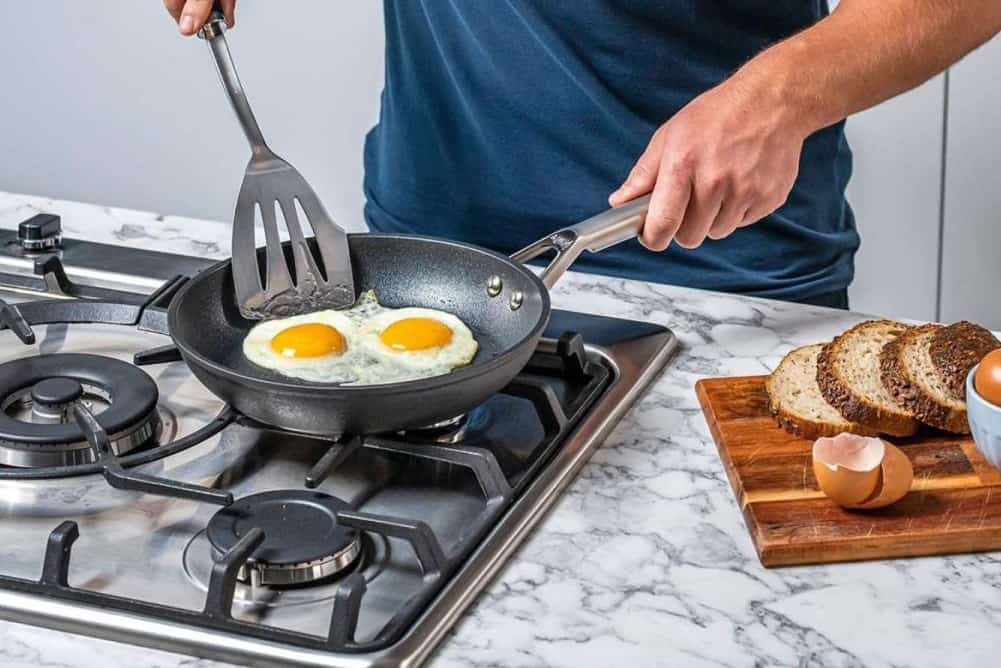
Non-stick pans come in a variety of materials. These different materials provide different experiences. Caring for this cookware will also vary depending on the material. One material, however, stands out: the Teflon non-stick pan.
You may have heard of the word Teflon. When you think about non-stick pans, what usually comes to mind are those made with Teflon.
Also known as polytetrafluoroethylene, Teflon is made up of carbon and fluorine atoms and is produced synthetically.
Popularity
It first rose to prominence during the 1930s. Manufacturers coated pans with clear plastic Teflon that would give them a waxy sheen and prevent ingredients from sticking to the pans.
The creation of Teflon-coated pans meant an easier process of cooking. It did not react with the ingredients for cooking, it had a surface that provided little to no friction, and it prevented food from sticking.
This came with a lot of benefits. You could use much less butter and oil since it had a non-stick surface. It could also drastically reduce clean-up time and minimize the effort needed in scrubbing pots and pans. Soon, it was on its way to becoming a household staple.
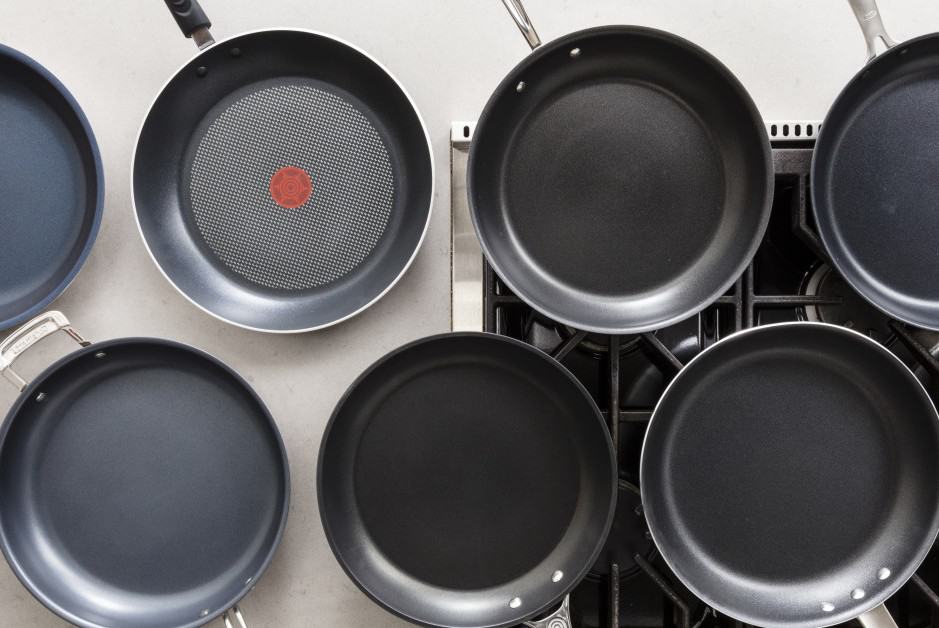
Issues
In the production of Teflon to give pans a non-stick finish, manufacturers utilized the substance perfluorooctanoic acid (PFOA). However, it posed a problem.
According to research, it was connected to the development of some illnesses such as liver and kidney disease. After a general outcry and several concerns and issues raised, it has been discontinued from use starting back in 2013.
This was not the only problem Teflon non-stick pans would face, however. Controversies regarding the safety of using non-stick pans have come to light and are being debated everywhere.
While others may argue that non-stick pans are completely safe since the discontinuation of PFOA, others still say that Teflon pans can still cause problems such as cancer or are even poisonous. But what is the truth?
How safe are Teflon non-stick pans
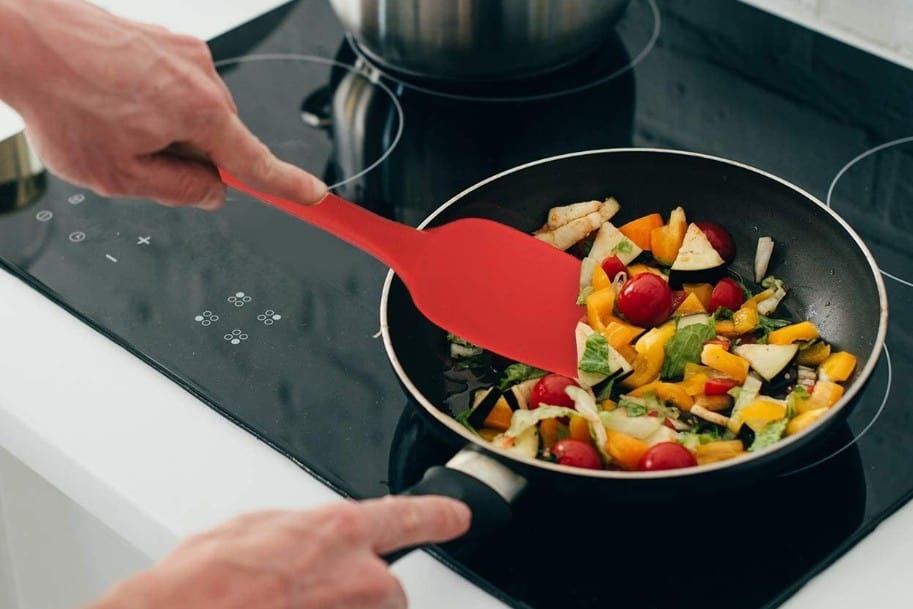
Still asking are nonstick pans safe? Here’s your answer: Teflon pans are generally safe when used properly.
However, practice care to prevent the degradation of these pans and to keep them safe for you to use. There are two things, however, you need to be careful about when it comes to this cookware.
PFOA
PFOA, the acid talked about earlier, was one of the main contributors to the concerns. Several studies showed a link between PFOA and problems such as infertility, testicular cancer, diabetes, obesity, and low birth weight.
To address this issue, the PFOA Stewardship Program was developed back in 2006. It was spearheaded by the US Environmental Protection Agency and happened with the cooperation of eight of the largest PFOA companies. Teflon was one of these.
Due to this program, PFOA was generally eliminated from American Teflon non-stick pans by the year 2013. This ensures the safety of the cookware that you love. Therefore, you don’t have to worry that much about the harmful effects of PFOA- granted that your non-stick pan was made in the US.
Overheating
You don’t have to be that worried about Teflon either. Teflon isn’t toxic and can even be ingested in small amounts without adverse reactions. The problem happens when it gets overheated.
If you expose Teflon to high temperatures for some time, its coating will begin to disintegrate. This disintegration will give off toxic fumes and may also release PFOA as a chemical byproduct.
Don’t worry, though. It takes a lot of heat for this to happen. The Teflon coating in your non-stick pan can begin to disintegrate at extremely high temperatures, especially around 390 degrees Celsius and above.
Once it reaches that temperature, the Teflon coating breaks down and may release toxic fumes that can cause polymer fume fever. This condition has symptoms like the flu.
However, this is a rare occurrence and has only been reported in cases where Teflon has been exposed to temperatures of around 390 degrees Celsius for periods of at least four hours. This may also cause PFOA to be released as a chemical byproduct.
How to take care of your non-stick pans
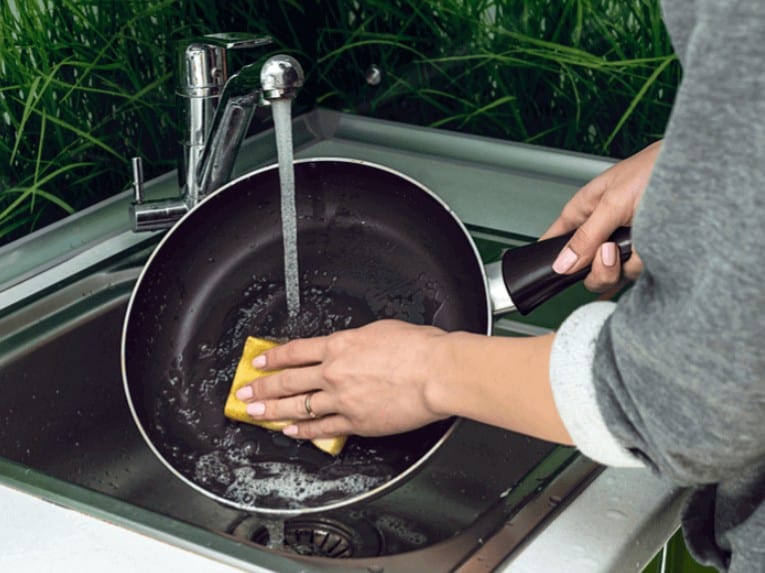
It’s best to be careful to prevent these mishaps from happening. Taking care of your Teflon non-stick pans can go a long way in ensuring the safety and longevity of your pans.
Always monitor the temperature
Teflon can be toxic when overheated. Constantly monitor the temperature of the pan and make sure that it does not go above 300 degrees Celsius for long periods.
It’s best to cook at low to medium heat and avoid high heat. Keep in mind that empty pans heat up faster.
Make sure the area is well-ventilated
Areas with poor ventilation heat up faster. They can also lead to heavy fumes that may contain traces of the disintegrated Teflon coating. This could lead to serious health conditions.
Open the windows and turn on exhaust fans when cooking.
Avoid metal utensils
Metal utensils can easily scratch and scrape away the waxy Teflon coating on the pan’s surface. This can damage the pan and make it lose its non-stick surface. Opt for less harsh utensils such as those made of wood or plastic.
Check out common mistakes that you should avoid when using non-stick pans:
Regularly replace battered cookware
You should know when it’s time to ditch that non-stick pan. Replace your cookware when the food begins to stick to it, or when there are clear dents, scratches, or scrapes on the pan.
Most Teflon non-stick pans have an average lifespan of around 2 to 3 years, even when used continually at low temperatures.
Use alternatives to Teflon
Teflon non-stick pans aren’t the only available non-stick cookware around. There are several other options available that all have their pros and cons. Try to explore and see what fits you and your cooking style.
Alternatives to the Teflon non-stick pan
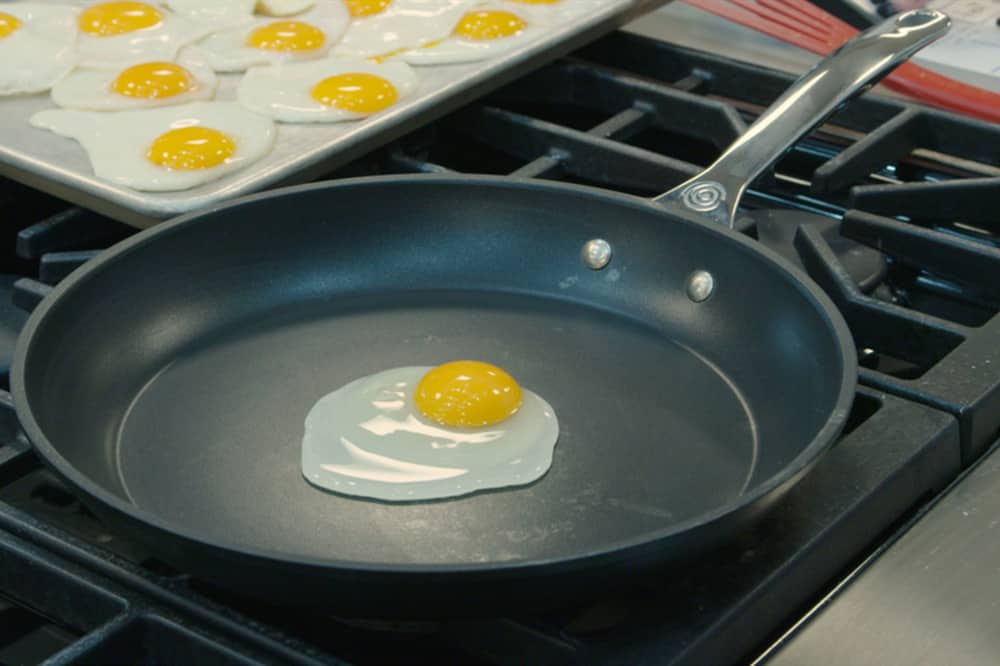
There are alternatives to the usual Teflon non-stick pan that you can use. Below is a handy list that rounds up some of the best alternative cookware and brands to help you on your non-stick journey.
Ceramic cookware
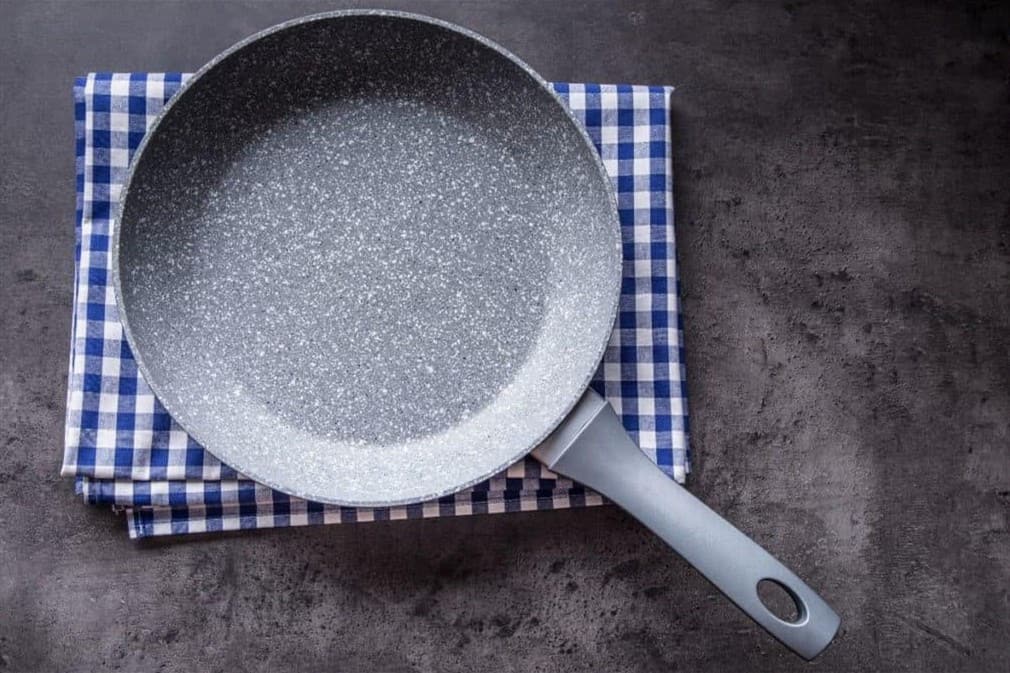
Ceramic cookware can come in two forms. You can either buy ceramic-coated cookware or those that are purely ceramic. It’s environmentally friendly and will leave no chemical residue or toxic fumes behind.
It’s one of the best types of cookware if you’re fond of cooking at a low heat slowly. However, be sure to invest in good quality cookware that will last you for a long time, as cheaper ceramic cookware tends to wear out within mere months. Some cheaper ceramic cookware may last only up to three months.
Cast iron
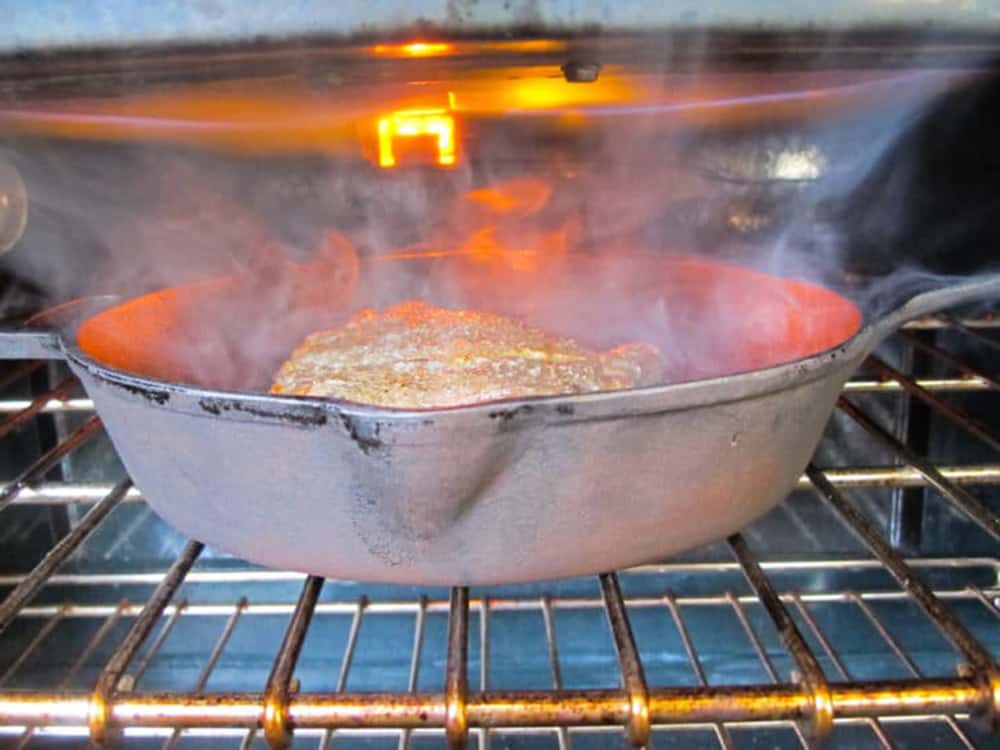
Cast iron is one of the most dependable non-stick pans out there. It’s also one of the oldest materials used for non-stick pans. You may remember your grandma using a large cast-iron pan for cooking. It’s been around for years, and with good reason.
Usually used for searing, it easily retains heat and can survive extreme temperatures. If you’re anemic, you’re also in luck. Cast iron pans give an added boost of iron to your meals. It’s extremely durable and long-lasting. However, you have to make sure to season your cast iron pans appropriately to keep the non-stick surface.
Stainless Steel
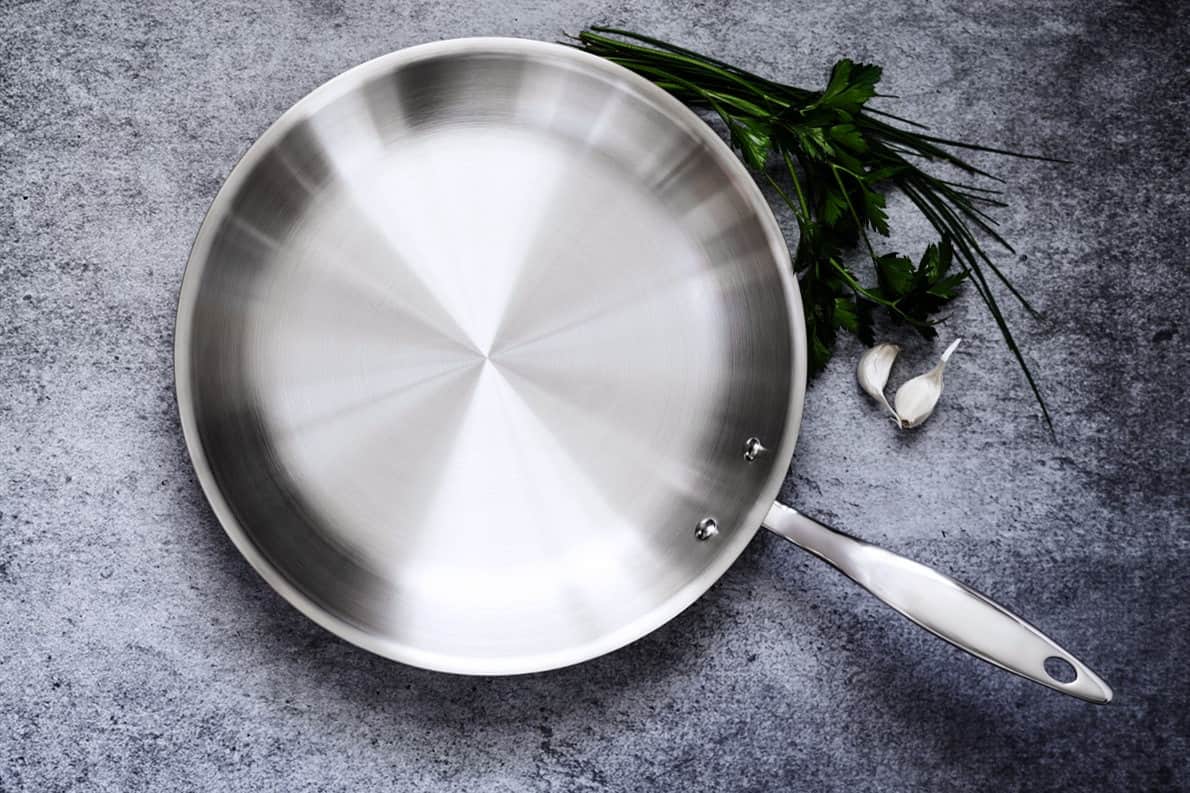
Stainless steel is an efficient choice because it is easy to clean. It’s especially useful when you sauté or brown food. Like cast iron, it will last a long time and will resist scratches and dents.
Pick a brand that has good quality and food-grade stainless steel to get the most bang for your buck.
Final thoughts
Are nonstick pans safe? It’s a question with a long history behind it. The answer? Yes, if you treat it properly and handle it with care. As with most things, it requires attention to keep it safe for use. Always remember to buy cookware that is of good quality.

Michael Johnson is the founder of Pan Mastery, Inspired by his blacksmith grandfather’s legacy has a deep appreciation for hand-crafted pots and pans, he provides invaluable guides, reviews, and recipes to enhance your culinary journey.

